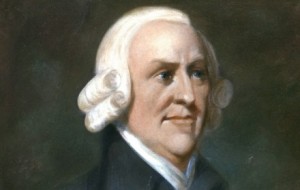The theory of capitalism is based on the ideology of ” free market ” and ” free trade” with minimal intervention from the state. In other words, the government play a minimal role in the market.
- Classical Liberalism ( 19th Century)
Duration: 19th Century
Proponents : Adam Smith (1723-1790) & David Ricardo (1772-1832)
Theory: They are thinkers behind the ideals of the ” free market” economy. They believe that the role of state should be limited, in order to facilitate and preserve an open economic exchange in the market. It believes that there is the ” invisible hand” of the market forces that would efficently and effectively allocate resources based on supply and demand.
- Keynesian Economics
Duration: Early twentieth century – after the 1930s economic depression in the USA during the reconstruction of the economies after World War II
Proponents : John Maynard Keynes (1936)
Theory: John Keynes believe that the state should take a more active role in the economy to ensure the well being of their citizens. The higher degree of state intervention involves steering economic policies to stimulate the economy; such as government expenditure to achieve employment (jobs) and consumerism.
- Neoliberalism
Duration : After the 1970s Economic Crisis
Proponents: Manfred B. Steger & Ravi K. Roy (2010)
Theory : This theory is similar to Classical liberalism however with the new conditions of globalizations. Neoliberalism is an ideological political theory that is a worldwide spread of the economic model of free market and free trade. The market order is held together by local and international markets. The role of the government is limited and it is used to facilitate market order through establishing strong political and legal foundations. The government should not intervene with economic activities (Gamble,2001)
1980s: Neoliberalism was used as a political initiative to stop the spread of communism. Neoliberal principles of deregulation, liberalization and privatization for the promotion of economic activities and progress (Steger & Roy,2010)
1990s: Rapid economic growth and the increase of transnational trade through establishment of free trade agreements world wide . This liberalize trade relations and integrate all national economics into a single global economy. It is also characterized by the establishment of the International Financial institutions (IFIs) such as the world bank. These organizations establish the debt restructuring scheme for developing countries.



